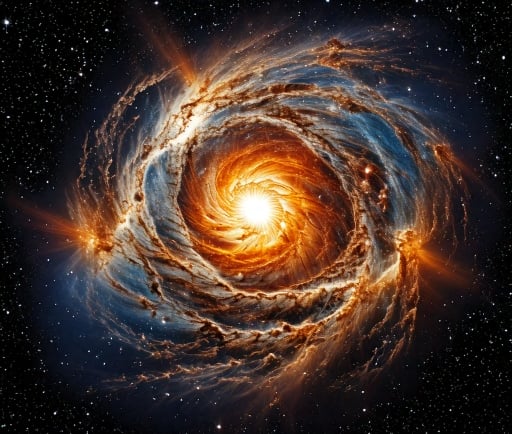Cassiopeia A: The Youngest Remnant of a Supernova in the Milky Way


Understanding Cassiopeia A
Cassiopeia A, often abbreviated as Cas A, is recognized as the youngest known remnant from a supernova explosion within our Milky Way galaxy. This celestial object is the aftermath of the cataclysmic demise of a massive star, which has fascinated astronomers and astrophysicists alike since its discovery. Positioned approximately 11,000 light-years away from Earth, Cassiopeia A serves as a point of great interest, not only for its age but also for the insights it provides into the life cycle of stars and the nature of supernovae.
The Formation of Cassiopeia A
The remnants of Cassiopeia A were created when a massive star—much larger than our sun—underwent gravitational collapse. This implosion initiated a series of explosive reactions, leading to the star's spectacular explosion in a supernova event. The ejected material from the explosion, consisting of gas and dust, has since been spread across a sizable area, creating the nebula we observe today. The study of this nebula has provided valuable information about the processes that govern stellar death and the recycling of cosmic materials into new stars and planets.
Cassiopeia A: Significance and Research
Cassiopeia A is not just a beautiful cosmic feature; it holds immense scientific value. As the youngest supernova remnant we know of, it presents a unique opportunity to study the aftermath of a supernova explosion in detail. The remnants radiate in various wavelengths of light, including radio waves, X-rays, and optical emissions, allowing astronomers to analyze its properties comprehensively. Ongoing observations have contributed to our understanding of neutron stars and the distribution of heavy elements formed during supernova explosions, highlighting Cassiopeia A’s role in the cosmic ecosystem.
Furthermore, as we explore Cassiopeia A, we gain deeper insights into the mechanics of supernova explosions. The immense energy released during these events triggers the formation of elements heavier than iron, such as gold and platinum, which are scattered across the universe. The remnants are not merely the remnants of a single star; they represent a critical phase in the cosmic cycle of matter, showing how the universe evolves and how new celestial bodies are born from ancient stars.
In conclusion, Cassiopeia A stands out as a remarkable object of interest within the Milky Way, providing an exceptional window into the life cycle of massive stars. Its study enhances our understanding of stellar dynamics and the universe's elemental makeup, rendering it an invaluable subject in contemporary astrophysics. As research continues to unravel the mysteries of Cassiopeia A, we can expect to learn even more about the intricate processes that shape the cosmos around us.
